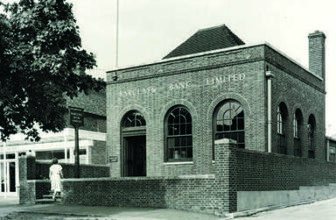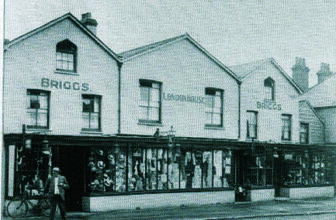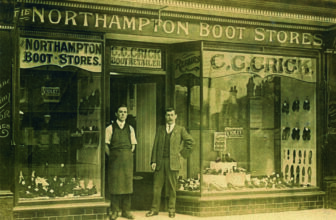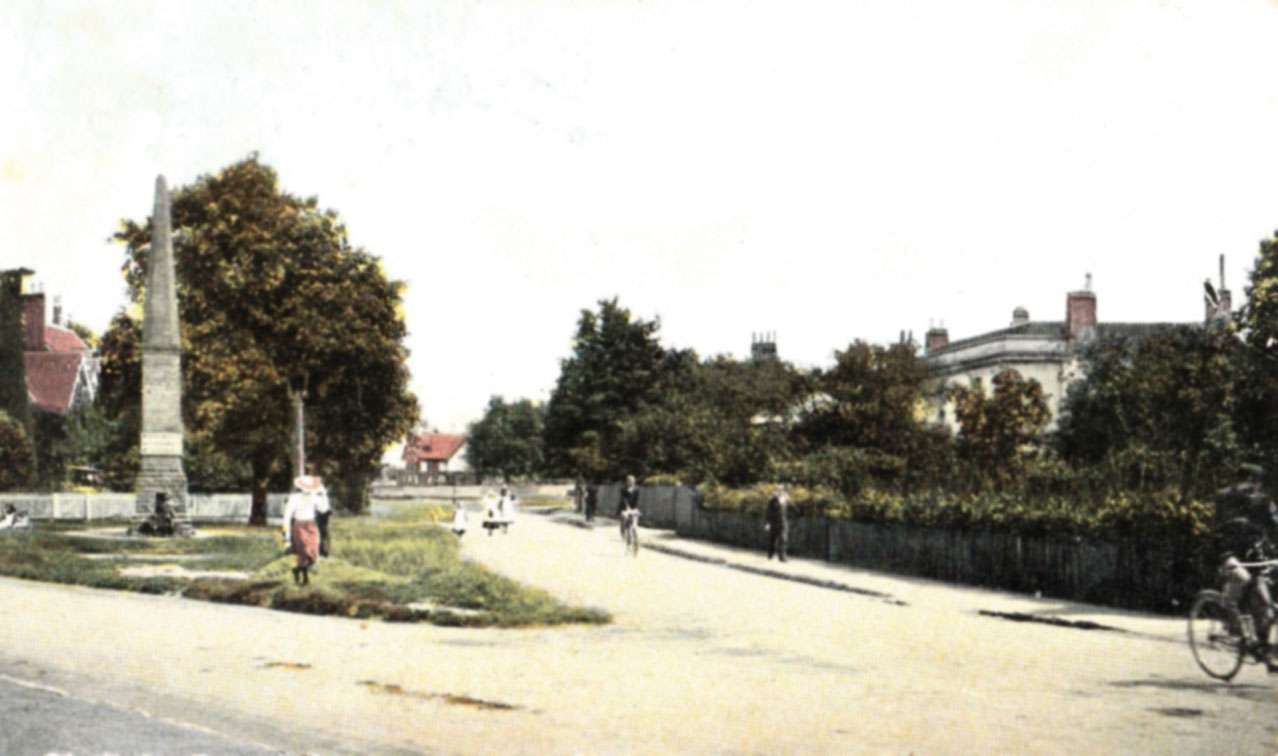
View of the Police Station, including Broadoak on the right (postcard post- marked 1909)
The Police Station
Sir Robert Peel set up the first modern police force, the Metropolitan Police, in 1829 (hence the nicknames ‘bobbies’ or ‘peelers’ for policemen). In 1835, the Municipal Corporations Act allowed cities and boroughs to set up their own police forces. Guildford did so the very next year, and Godalming followed suit in 1841.
There were no police forces in the rural areas. Cranleigh’s ‘Vestry’ (forerunner of the parish council) decided in 1842 to employ a paid constable at fifteen shillings per week. Unfortunately, he did not give satisfaction and was dismissed after only five months. The Surrey Constabulary was established in 1851, tasked with setting up a police force throughout the county.
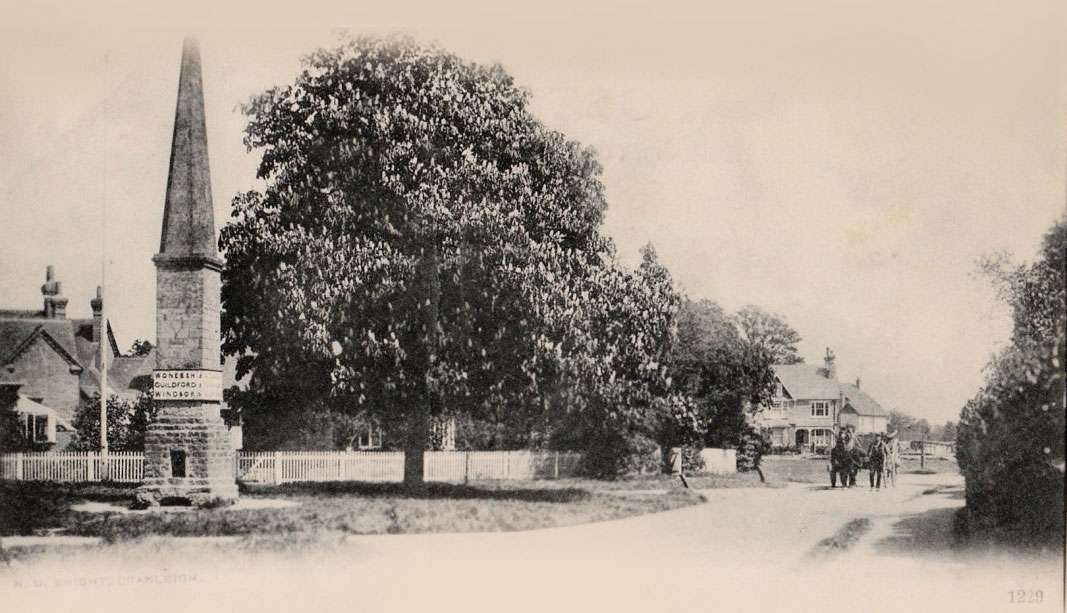
The Police Station from the Obelisk is tucked just round the corner (H.U. Knight, before 1910, courtesy of Mrs Vera Wilkinson)
In 1881, a police constable of the Surrey Constabulary called Turner Edgeler, 32, was living with his wife and four children in a house on the Common, somewhere on the land that Oakenhurst and Baltic House now occupy. Different constables figure in the 1891 and 1901 Censuses.
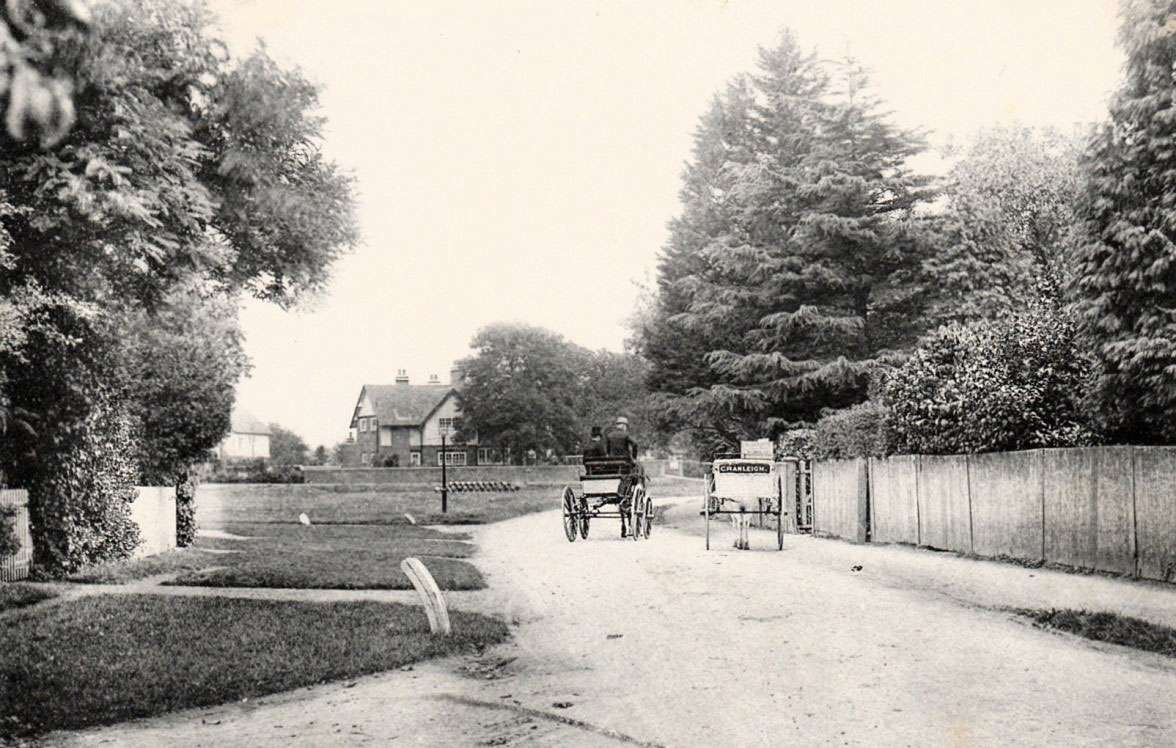
Horsham Road and the new Police Station (by Cranleigh’s photographer, H.U. Knight, post-marked 1907, courtesy of Mrs Vera Wilkinson)
However, in 1904 an impressive new police station was built in a prominent position in Horsham Road, at Luck’s Green. According to a later Cranleigh policeman, ‘the first man to be taken in there was drunk in charge of a horse and cart: he had been to Guildford market’. This was sufficient explanation: Guildford market was notorious for drunkenness.
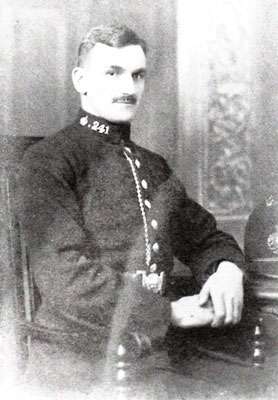
Sergeant Charlie Mayes (from Cranleigh Voices, 2000)
Between 1911 and 1915, the Inland Revenue conducted a nationwide survey of every house and property in the United Kingdom, to assess them for tax purposes. This is how the Police Station was described:
Cranleigh Police Station, owner Surrey County Council, July 1915. Brick and tile, 3 bedrooms, WC, living room, scullery, small larder, washhouse, office, 3 cells and 2 WCs’.
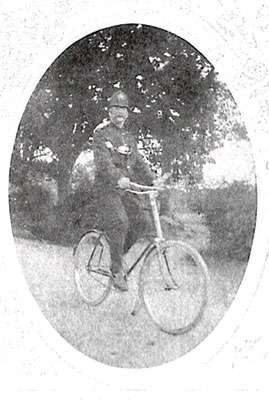
PC Kemp on his bicycle (picture from Cranleigh Voices, 2000)
In 1913, PC Kemp attended a distressing suicide at Baynards, of a man who cut his own throat when given notice to quit his farm cottage. A road accident in late 1915 happened right outside the Police Station, when an elderly employee of the gasworks on the the Common, called Elijah Chitty, 68, was walking home from work in the wartime darkness to his home in Mount Road. He stepped in front of a car driven by Mr David Henderson, the owner of Vachery, and was knocked down. He was taken to the Village Hospital, but died there on Christmas Eve. The inquest was held at the Lady Peek Institute (now ‘Bunbury House’), and it was said that Elijah ‘had never had a day’s illness in his life’, but he ‘couldn’t see or hear very well, and he couldn’t walk very well’ either. Poor old Elijah! Mr David Henderson was completely exonerated. The verdict was Accidental Death.
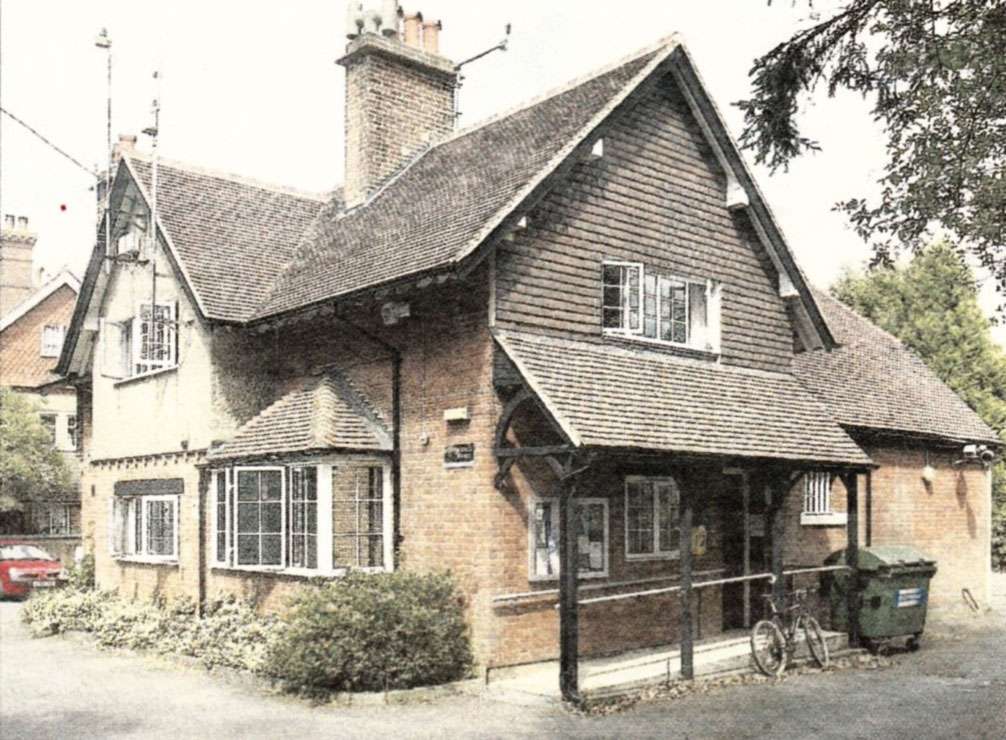
The Police Station in about 2006 (Surrey Advertiser; courtesy of Mrs Vera Wilkinson)
During the First World War, the police were responsible for enforcing regulations concerning black-out, and not using motor cars for pleasure purposes – or even to go to church. The number of policemen went up, not necessarily because the volume of crime had increased, but because the Cranleigh sergeant supervised constables in Ewhurst, Dunsfold and Shamley Green. The police had to ensure that farmers were doing sheep-dipping to avoid foot-and-mouth outbreaks. They also had to check and keep a register of any aliens: there were many girls from abroad in service around Cranleigh before the Second World War, and employers were supposed to notify the police if the girls moved. Gipsies could be ‘a bit of a nuisance’. Another responsibility was attending the doctor when he did post mortems. ‘The mortuary was at the end of Malt House Lane, a terrible place. It was so small and only lit with one gas burner’.
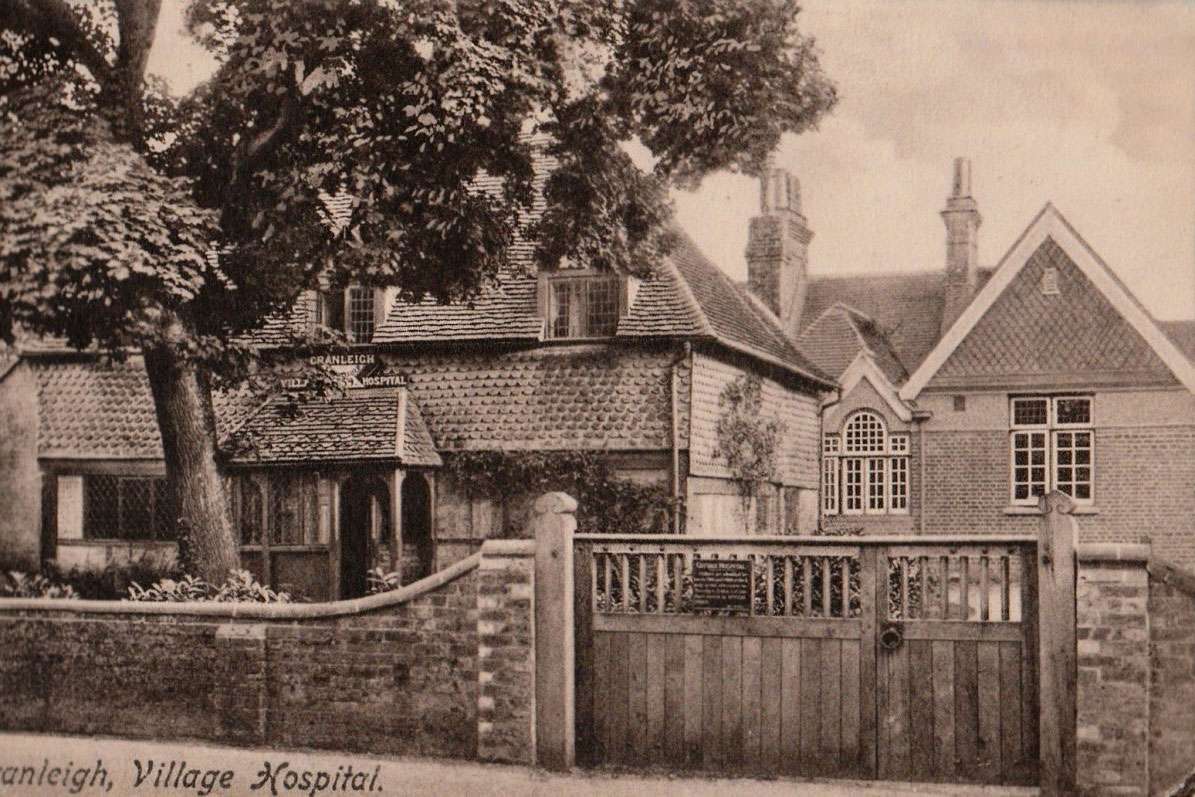
The Village Hospital, where Elijah Chitty was taken (a Francis Frith postcard, postmarked 1913, by courtesy of Mrs Vera Wilkinson)
Sergeant Charlie Mayes was in charge at the Police Station 1938-41. His daughter, now Mrs Vera Wilkinson, remembers gipsies stealing daffodils at Vachery regularly each spring. Her father would ‘catch them and confiscate the flowers’, and she and her mother would make them into bunches for elderly people. The Mayes family used the cells beneath the house as shelters during wartime air raids, taking their eiderdowns with them. ‘We spent the night there; it was the safest place as the walls were very thick’. Some aerial dogfights took place over Cranleigh: if there were crashes, Sergeant Mayes had to sift through the wreckage for bodies, while ‘pilots who had bailed out were put in the cells’, pending investigations.
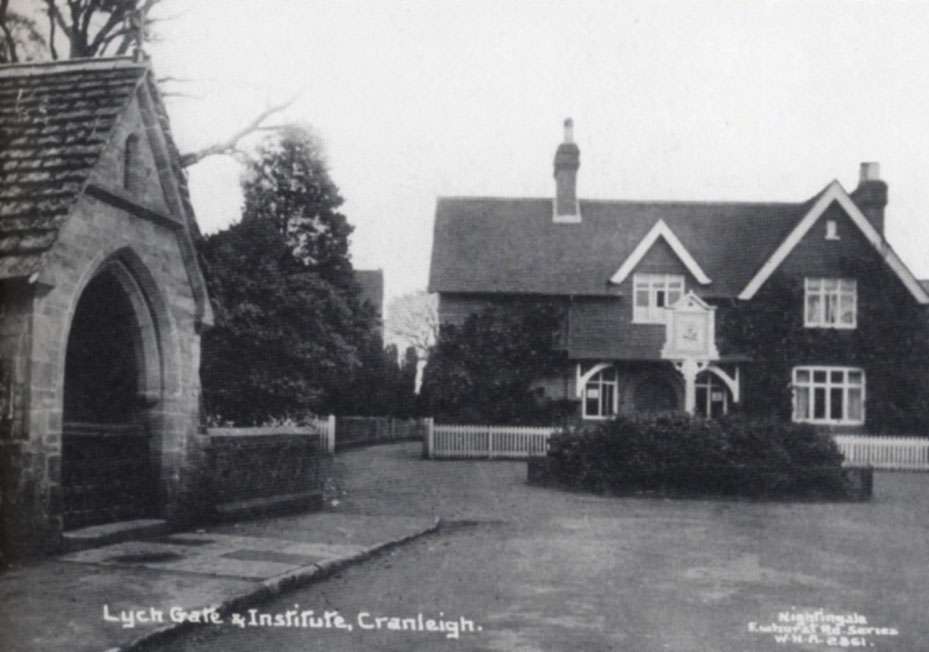
The Lady Peek Institute, a gentleman’s club, where inquests were regularly held (postcard from a series sold by Jabez Nightingale in his confectioner’s shop at the junction of Ewhurst and Mead Roads)
Regrettably, in line with Surrey County policy, the Police Station was closed about 2010, and it is now a private house.
The Cranleigh History Society meets on the second Thursday of each month at 8.00pm in the Band Room. The next meeting will be on Thursday February 13th, when Roger Duckworth will speak on ‘The Unknown History of the Unknown Warrior’.



